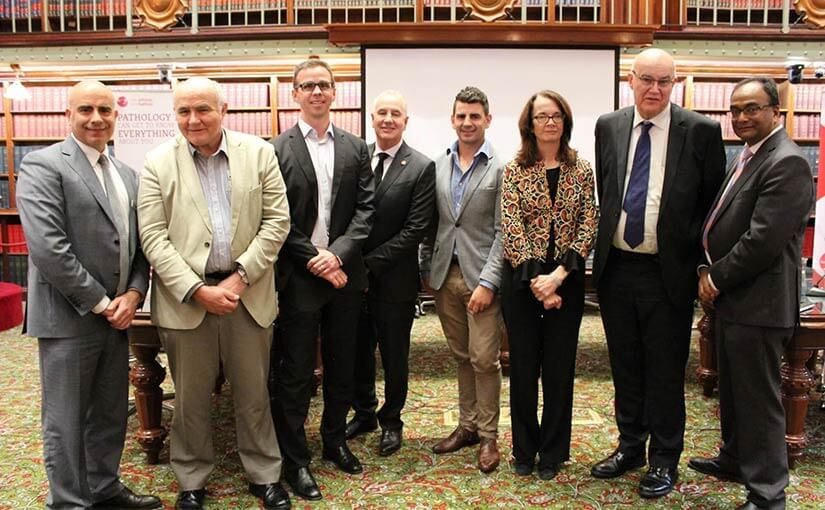The news is often full of stories about new technology that will change our lives and healthcare is a particular area where we often look to technology to help with complex problems.
But what about the technology we rely on, but never see? Similar to the expert pathologists and medical scientists hidden behind the lab doors, the technology used daily in pathology laboratories is vital to delivering high quality, accessible and affordable healthcare to all Australians.
Pathology Technology Australia (PTA) is the body that represents companies in Australia developing innovative testing, analysis and information technologies used by pathology services.
PTA hosted a panel discussion this month; Pathology Technology Disruptors Past and Future, examining the role technology has played to achieve current delivery of pathology services and to discuss ideas of what is coming next.
Scott Jansson, a leading pathology expert with many decades working in public pathology organisations, was part of the panel discussion and he recognised the contribution technology providers have made to pathology so far:
“We have achieved a lot over the last 20-30 years through new technologies in pathology, such as the latest analysers and faster automation as we’ve seen in chemistry immunoassays and haematology coagulation, for example. These technologies are a big part of what has got us to where we are today.”
“We’ve seen a lot of consolidation in pathology services too but there is a limit to what more can be achieved due to the size and capacity of laboratories as well as population distribution and the geography of Australia. We’ve reached a point where we now need to look to new disruptive technologies to deliver further benefits.”
Several themes emerged from the discussion including the challenges that innovators face in bringing new devices, tests and software into labs.
Panel member, Dr Colman Taylor, Director of Health Technology Analysts said:
“We are currently seeing an explosion in innovation in pathology technology but the system for assessing new technologies needs to catch up. Our patients are becoming better educated and making more informed choices, which our industry is responding to and supporting, while continuing to drive efficiency. The challenge we face is demonstrating the value of technological innovation when it is broader than what the assessment system recognises.”
Dean Whiting is CEO of PTA, he agreed that the landscape is changing and that new challenges are facing the sector:
“In Australia, we are very fortunate to have a well-regulated and well-funded health system. The systems we have for assessing new health technologies benefit patients by ensuring strict guidelines are met.
“We are now at a point where we can see many applications for new technologies that can have broad benefits. In the lab these include improving efficiencies and workflow. For patients there are potential outcomes such as reducing GP visits, reducing hospitalisations, improving compliance with medicines and treatment advice, and avoiding further complications of some diseases. This can also result in economic savings, and we need to work together with funders to ensure assessment processes consider patient outcomes, health economic and societal benefits.”
The world of technology might seem isolated but discussion at the event highlighted the importance of working together with a wider pool encompassing universities, think tanks, patient advocacy organisations, industry groups and healthcare providers.
As emerging technologies offer more possible applications, these will require new ways to prove efficacy and to demonstrate that changing an existing approach or system will be worth the investment of budget, time and energy.
Mr Whiting said:
“Collaboration is key in our industry. Coming together and using in-depth insights from across academia, patient advocacy and technology developers means we keep driving innovation that will best serve patients, health professionals and the health system. This is also the best way we can work with government to contribute to evolving guidelines, by proving the broad benefits of emerging technologies.”
Innovators in this space are keenly looking to the future and moving increasingly towards a preventative health model.
Some of the biggest health challenges Australia faces, are our aging population and high rates of chronic diseases.
Mr Whiting explained:
“Tomorrow is where the problem lies. We are moving towards people living longer so supporting healthy ageing, preventing or delaying the onset of chronic disease, and minimising the impact and additional complications of diseases are some of the problems that those at the forefront of technology are looking to tackle. We want to bring people together to create an environment that nurtures clever solutions to these complex problems.”

